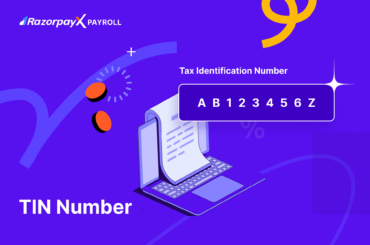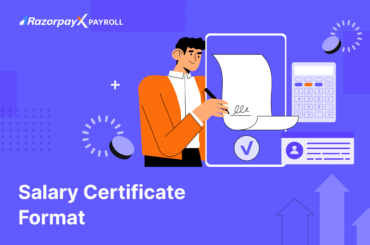Managing outstanding balances effectively is crucial for maintaining financial health and avoiding unnecessary penalties. This article explores the outstanding amount types, impacts, and practical tips for handling outstanding balances, helping you make informed financial decisions.
Table of Contents
What is Outstanding Balance?
An outstanding balance refers to the total unpaid amount you owe, which can include various components like balance transfers, purchases (both online and offline), cash advances, fees, interest charges, and any other applicable costs. This balance reflects the portion of money still due after partial payments, and it represents a critical aspect of your financial obligations.
Whether it’s an outstanding balance on a credit card, loan, or business invoice, it’s essential to track these dues carefully. For individuals, unpaid credit card balances can accumulate interest and penalties, while businesses may face cash flow disruptions due to overdue payments.
Common reasons for an outstanding balance include forgetfulness, financial difficulties, or disputes over the services or products provided. Addressing these outstanding amounts promptly can prevent further financial complications.
Example of Outstanding Balance
Let’s consider a practical example to better understand how an outstanding balance works:
Personal Finance Example: If you have a credit card and make a purchase worth ₹20,000, your outstanding balance is ₹20,000. If you pay ₹5,000 of it, your remaining outstanding balance will be ₹15,000. However, if your credit card has an interest rate of 18% per annum, interest will be applied to this ₹15,000 until it’s fully paid off.
Business Finance Example: For a small business, if a client is invoiced ₹50,000 for services rendered but only pays ₹30,000, the remaining ₹20,000 is the outstanding balance. If this balance remains unpaid for a long time, the business may face cash flow issues or even consider legal steps to recover the debt.
In both cases, the outstanding balance is the amount still due, which may be subject to interest, penalties, or additional fees if not addressed promptly.
How Outstanding Amount Work?
Outstanding balances represent amounts that remain unpaid on financial obligations after partial payments or no payments at all. These balances accumulate until they are fully settled, often accruing interest or late fees if not addressed promptly.
Types of Outstanding Balances
Credit Card Balances
These refer to the unpaid amount on your credit card after making partial payments. These balances accrue interest if not paid on time, leading to higher repayment amounts and potential late fees.
Loan Repayment Balances
This type of balance represents the remaining amount owed on a loan. It includes the principal, overdue interest, and accrued interest. Unpaid loan repayment balances can increase due to compounding interest, making it crucial to stay on top of repayments to avoid additional financial burdens.
Pending Invoices in Business Transactions
Businesses often encounter outstanding invoices for goods or services they have provided but have not received payment for. These pending amounts can disrupt cash flow, making businesses need to track and follow up on overdue payments to ensure smooth operations.
Finding the Outstanding Balance Amount
Knowing your outstanding amount is essential for both individuals and businesses, as it directly impacts financial planning and stability. Regularly monitoring your balances helps you meet payment deadlines, avoid penalties, and maintain a good credit score.
To check your outstanding balance, log into your online banking or mobile app and navigate to your loan or credit card section. The balance will show:
- Principal Amount: The original amount owed
- Accrued Interest: Interest charges on the outstanding balance
- Fees: Any late fees or additional charges
For credit cards, this includes purchases, cash advances, and balance transfers. For loans, it includes principal and interest. Regularly reviewing your account or contacting the lender ensures accuracy. For businesses, using accounting tools to track invoices is key to managing overdue payments.
Outstanding Loan Balance Includes Three Important Components
1. Remaining Principal Loan Amount
This is the original amount of money you borrowed, minus any repayments you’ve already made. It’s the main portion of the loan balance and shows how much you still owe to the lender. The remaining principal is key in determining how much more you need to pay to clear the debt.
2. Overdue Interest
Overdue interest is the extra amount added to your loan when you fail to pay. It’s usually a percentage of the outstanding balance and increases the amount you owe if you don’t make your payments on time.
3. Accrued Interest
Accrued interest is the interest that builds up over time on the outstanding loan balance. It is calculated based on the principal amount and the interest rate agreed upon when the loan was taken. This interest adds to the total amount owed as time passes, increasing the borrower’s debt. If the loan is not paid off, the interest accumulates, compounding the total repayment amount. This means that the longer the loan remains unpaid, the higher the accrued interest will be, increasing the overall balance.
What Happens If You Don’t Pay Outstanding Balances?
Accumulation of Interest and Late Fees
When you miss payments on outstanding balances, interest and late fees begin to accumulate, increasing the total debt. Credit cards and loans often charge high-interest rates, which can cause the balance to grow rapidly over time.
Additionally, each late payment can trigger a penalty fee, further escalating the financial burden. These extra charges make it harder to clear the debt and prolong the repayment process. Over time, this accumulation can result in a significantly larger outstanding amount than originally owed.
Impact on Credit Score
Unpaid outstanding balances negatively impact your credit score, which is a crucial factor in determining your eligibility for loans and credit. A lower credit score means higher borrowing costs, as lenders view you as a higher risk. Missed payments, defaults, and accounts in arrears can stay on your credit report for years, damaging your ability to secure favourable loan terms.
Even a few missed payments can have a lasting effect, making it difficult to access financial products in the future. Maintaining a good credit score is vital for financial health, and paying outstanding balances on time helps keep it intact.
Potential Legal Actions for Prolonged Non-Payment
If you fail to address outstanding balances for an extended period, creditors may resort to legal action to recover the debt. This could involve court proceedings, where a judge may order the garnishment of wages or the seizure of assets to settle the outstanding amount. Legal actions can be costly, time-consuming, and stressful, further complicating your financial situation.
Additionally, prolonged non-payment could lead to a judgment being recorded against you, which remains on your financial record for several years. Legal recovery actions can also impact your professional reputation and relationships with lenders.
Tips to Clear Outstanding Payments
1. Set Up Automatic Payments
Automating your payments ensures they are made on time without you having to remember each due date. This method helps prevent late fees and accumulating interest charges, which can increase your outstanding balance. By setting up automatic payments, you can prioritise your finances without the added stress of missed deadlines, ensuring your debts are cleared consistently and on schedule, and keeping your credit in good standing.
2. Prioritise High-Interest Debts
Focus on paying off loans or credit cards with the highest interest rates first. High-interest debts can quickly balloon, increasing the total amount owed. By targeting these debts first, you can reduce the overall interest burden, making it easier to pay off your remaining balances faster. This strategy allows you to save money in the long term and relieve your financial stress.
3. Negotiate Payment Terms
If you struggle to keep up with payments, contact your creditors or service providers and ask for more manageable terms. This could involve extending the repayment period or lowering the interest rate. Many lenders are willing to negotiate if you proactively communicate your situation, providing temporary relief. Negotiating payment terms can significantly affect your ability to clear your outstanding payments without overwhelming your budget.
4. Consolidate Your Debt
Consolidating multiple outstanding debts into one can simplify your finances and reduce your overall interest payments. By merging several debts into a single loan with a lower interest rate, you can lower the monthly payment amount and have only one due date to manage. This can help streamline your payments and make keeping track of your obligations easier, ultimately speeding up your path to becoming debt-free.
5. Track Your Expenses
Regularly monitoring your spending habits is essential for identifying areas where you can cut back. This can include reducing discretionary expenses such as dining out or entertainment. You can allocate more money toward clearing your outstanding balances by finding and eliminating unnecessary costs. Tracking expenses helps you stay within budget and prioritise clearing debt, allowing you to pay off what you owe more quickly while avoiding further financial strain.
6. Make Partial Payments
If you’re unable to pay off your debt in full, making partial payments is still a step in the right direction. Regular, smaller payments can reduce the outstanding balance over time, preventing it from growing further due to interest or late fees. While it may take longer to clear the debt, making partial payments shows commitment to settling the amount owed. Consistently making these payments will gradually lower your debt and improve your financial standing.
Conclusion
Addressing outstanding balances is crucial for maintaining financial stability, whether for individuals or businesses. You can regain control of your financial situation by taking proactive steps, such as regular monitoring, timely payments, and clear communication with clients or lenders. Managing outstanding amounts effectively not only helps avoid unnecessary fees and interest but also improves cash flow and credit health. It’s important to stay vigilant and address overdue balances promptly to prevent long-term financial challenges. Taking charge of your finances now can pave the way for better financial health in the future.
Related Read: What Is an Ad Hoc Payment and When Should You Use It?
FAQs
Q1. How do you resolve an outstanding payment?
To resolve an outstanding payment, start by reviewing the details to ensure the amount is accurate. Prioritise payments based on interest rates or due dates. If you can’t pay the full amount, contact the creditor to set up a manageable payment plan. Make sure to pay on time to avoid additional interest or fees.
Q2. How do I find out my outstanding balance?
You can find your outstanding balance by checking your loan or credit card statement or by accessing your account through an online portal or mobile banking app. For loans, the outstanding balance is typically displayed along with any overdue interest or late fees.
Q3. Does outstanding balance mean past due?
Outstanding’ refers to the total amount you owe, while ‘past due’ or ‘overdue’ refers to the portion of that amount that was not paid by the due date. If payment is overdue, it may result in additional fees or interest charges, and it could negatively affect your credit score.
Q4. Is Outstanding Balance and Average Outstanding Balance the Same?
No, they are not the same. The outstanding amount refers to the total amount currently owed, while the average outstanding balance is the average amount owed over a specific period. The average is often used for assessing trends in debt levels or calculating interest.
Q5. Is outstanding balance a liability?
Yes, an outstanding balance is considered a liability, as it represents money owed to others. For businesses, this liability may appear on the balance sheet under accounts payable, indicating amounts that need to be paid to creditors or suppliers.
Q6. What is outstanding in balance sheet?
In a balance sheet, “outstanding” typically refers to amounts owed by a company, such as loans, accounts payable, or unpaid invoices. These outstanding amounts are liabilities and must be settled over time as part of the company’s financial obligations.



